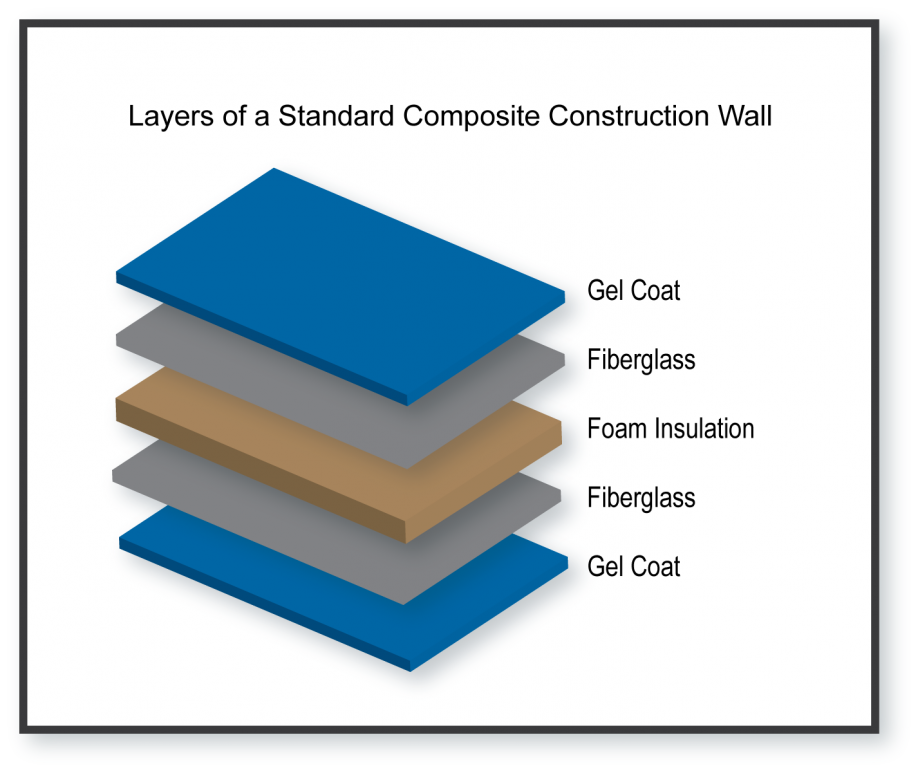Unlocking the Environmental Benefits of Recycled Composites in Building And Construction and Style
In the world of building and construction and layout, the utilization of recycled compounds holds substantial guarantee for enhancing sustainability techniques and reducing environmental impact. The shift in the direction of a more sustainable future in these sectors pivots on unlocking the full possibility of recycled compounds.

Ecological Influence Decrease
The decrease of ecological influence with using recycled compounds in construction and layout plays a crucial function in lasting methods. By incorporating recycled compounds into building products, the building sector can considerably decrease its carbon impact and add to a much more green future. These sustainable materials, made from repurposed plastics, wood fibers, or various other recycled aspects, offer a practical option to typical building products without endangering on high quality or longevity.
Recycled compounds aid draw away waste from land fills and minimize the requirement for extracting raw products, hence preserving all-natural sources. Furthermore, the production procedure of these compounds often eats much less energy and releases fewer greenhouse gases compared to producing virgin products (composites). This change towards making use of recycled compounds not only reduces ecological injury but additionally promotes a round economic situation by motivating the reuse of products that would otherwise be disposed of
Waste Reduction
With a concentrate on reducing waste in construction and design, the assimilation of recycled compounds offers a lasting remedy to reduce ecological influence. Waste reduction is a crucial element of lasting methods, and making use of recycled composites offers an opportunity to achieve this goal efficiently. By making use of products that have actually currently served their first purpose, such as recycled plastics or recovered wood fibers, the building and style industries can dramatically lower the amount of waste created and sent to garbage dumps.
Recycled compounds have the prospective to divert considerable amounts of waste from standard disposal approaches, adding to a much more circular economic situation where resources are made use of successfully. In addition, the manufacturing process of recycled compounds usually consumes much less energy and generates fewer emissions contrasted to virgin products, even more reducing the environmental impact of building and layout projects.
Implementing waste minimization techniques via the incorporation of recycled compounds not only assists in conserving natural deposits however also promotes an extra lasting approach to structure and creating for a greener future.
Energy Preservation
Integrating recycled composites not only minimizes waste in building and construction and layout however also plays a crucial duty in improving energy conservation methods within the sector. Using recycled compounds in building and construction can significantly contribute to power conservation with numerous methods. The manufacturing of virgin products usually calls for considerable power inputs, whereas utilizing recycled compounds eats much less power, thus lowering general power consumption. Furthermore, integrating recycled composites can contribute to much better insulation residential properties in buildings, lowering the requirement for too much home heating or air conditioning, and as a result decreasing power use for climate control. The lightweight nature of numerous recycled composites can lead to lighter structures, calling for less power for transportation and installation. By promoting the use of recycled composites in building and design, the industry can make considerable strides towards accomplishing power effectiveness and reducing its carbon impact, inevitably contributing to a much more sustainable constructed environment.
Carbon Impact Decrease
Enhancing sustainability practices through the usage of recycled composites in building and style significantly decreases the carbon impact of the sector. By integrating recycled materials into the manufacturing of composites, the requirement for virgin sources reduces, causing lower energy usage and greenhouse gas exhausts connected with typical production processes. This decrease in carbon footprint is crucial in combating climate modification and advertising a more internet environmentally pleasant method to building and layout.
Additionally, making use of recycled composites additionally helps in drawing away waste from landfills, thus minimizing the environmental effect of disposal and advertising a round economic climate. The carbon impact decrease accomplished with the adoption of recycled compounds straightens with the international press in the direction of lasting techniques and the reduction of industrial exhausts. It showcases you can try these out a commitment to responsible resource monitoring and a shift towards greener alternatives in the building and construction and layout sectors. Eventually, by focusing on the integration of recycled compounds, the market can make substantial strides in lowering its carbon footprint and adding to a much more sustainable future.
Lasting Future
The assimilation of recycled compounds in building and design not just addresses immediate environmental worries but likewise lays a solid structure for a lasting future in the sector. By including recycled compounds into building materials and products, the building and construction and style industries can significantly minimize their dependence on virgin resources, causing an extra round economic situation. This shift in the direction of sustainability is essential for reducing the ecological effect of conventional building and construction methods, which frequently result in high degrees of waste generation and source exhaustion.

Final Thought
In verdict, recycled composites supply substantial environmental benefits in building and design by minimizing environmental influence, reducing waste, preserving power, reducing carbon impact, and promoting a sustainable future. Embracing using recycled compounds can add to an extra environmentally-friendly strategy to building and design, eventually causing a much more sustainable and greener future for all.
The decrease of ecological effect via find more information the usage of recycled composites in construction and design plays a critical function in sustainable methods.With a focus on minimizing waste in building and design, the assimilation of recycled compounds uses a sustainable solution to minimize ecological impact. By promoting the usage of recycled compounds in construction and layout, the industry can make significant strides towards achieving energy efficiency and minimizing its carbon footprint, inevitably adding to a much more lasting built environment.
